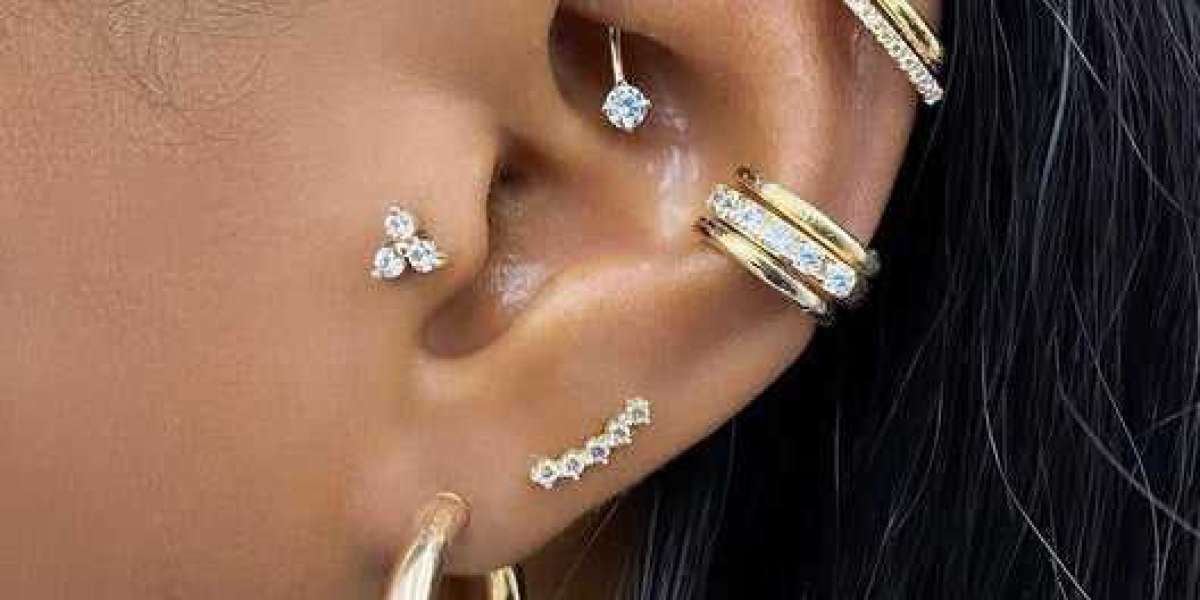Conch piercings have become increasingly popular in recent years, admired for their unique placement and aesthetic appeal. Located in the middle part of the ear’s cartilage, conch piercings can be a stunning addition to your collection of body modifications. However, like any piercing, they require proper care and timing before jewelry can be changed. This article will guide you through the essential aspects of conch piercings, focusing on when can i change my conch piercing safely.
Understanding Conch Piercings
Conch piercings are named after the conch shell because the piercing is located in the ear's conch, the cup-shaped area of the ear cartilage. There are two types of conch piercings: inner conch and outer conch.
Inner Conch Piercing: This involves piercing the flat area in the middle of the ear.
Outer Conch Piercing: This is done on the outer part of the ear's cartilage, closer to the helix.
Both types of piercings are performed with a needle, and the healing process is similar to other cartilage piercings.
Healing Process
The healing process for a conch piercing can vary depending on individual factors, including overall health, aftercare practices, and environmental conditions. Generally, the healing time for a conch piercing is around 6 to 12 months.
Stages of Healing:
Initial Healing (0-4 weeks): The body starts to form a protective barrier around the piercing. It’s crucial to avoid touching or changing the jewelry during this period.
Mid-Healing (4 weeks-6 months): The tissue inside the piercing tunnel begins to strengthen. Some swelling and discomfort may persist.
Final Healing (6-12 months): The piercing should be fully healed, with reduced swelling and no discharge.
During the healing process, it's essential to follow aftercare instructions diligently to avoid infections and complications.
When to Change Your Conch Piercing
Changing your conch piercing jewelry should only be done after the piercing is fully healed. Here are key points to consider:
Consult Your Piercer: Your piercer is the best person to assess whether your piercing is healed enough to change the jewelry. They can inspect the piercing for any signs of irritation, infection, or incomplete healing.
Wait at Least 6 Months: While the average healing time is 6 to 12 months, many piercers recommend waiting at least 6 months before changing the jewelry. This reduces the risk of irritation or damage to the healing tissue.
Look for Signs of Healing: Signs that your piercing is healed include the absence of pain, swelling, redness, or discharge. The piercing should feel comfortable and not tender to the touch.
Aftercare Maintenance: Even if your piercing seems healed, continue with aftercare practices such as saline soaks to maintain cleanliness and prevent infection.
How to Change Your Conch Piercing Safely
Once you have determined that your conch piercing is fully healed, follow these steps to change your jewelry safely:
Wash Your Hands: Always wash your hands thoroughly with soap and water before touching your piercing to prevent introducing bacteria.
Use Sterile Tools: Use sterile gloves and tools, such as piercing pliers, if necessary. Avoid using your fingers to minimize the risk of contamination.
Choose the Right Jewelry: Select high-quality jewelry made of materials such as titanium, surgical steel, or gold to avoid allergic reactions or irritation.
Clean the New Jewelry: Ensure that the new jewelry is cleaned and sterilized before inserting it into your piercing.
Gently Remove the Old Jewelry: Carefully and gently remove the existing jewelry. If it feels stuck or you experience pain, consult your piercer for assistance.
Insert the New Jewelry: Slowly and gently insert the new jewelry into the piercing. Ensure it is securely fastened but not overly tight.
Monitor the Piercing: After changing the jewelry, monitor your piercing for any signs of irritation or infection. If you notice any issues, revert to your piercer for advice.
Potential Risks and Complications
Changing your conch piercing too soon or without proper care can lead to several complications:
Infection: Inserting new jewelry before the piercing is fully healed can introduce bacteria, leading to infection.
Irritation Bumps: Switching jewelry too early can cause irritation bumps or keloids.
Prolonged Healing: Disrupting the healing process can extend the time it takes for the piercing to fully heal.
Tips for Successful Conch Piercing Maintenance
To ensure your conch piercing heals properly and remains healthy, consider the following tips:
Follow Aftercare Instructions: Adhere to the aftercare routine recommended by your piercer, which typically includes saline soaks and avoiding harsh chemicals.
Avoid Touching: Minimize touching or rotating the jewelry, especially with unclean hands.
Be Mindful of Hair and Clothing: Avoid snagging the piercing on hair, clothing, or accessories to prevent trauma.
Stay Healthy: Maintain a healthy lifestyle, including proper nutrition and hydration, to support the body’s healing process.
Conclusion
Conch piercings are a beautiful and trendy form of body art, but they require patience and proper care, especially when can i change my conch piercing considering changing the jewelry. Ensure your piercing is fully healed, typically after 6 to 12 months, and consult your piercer before making any changes. By following proper aftercare and taking precautions, you can enjoy your conch piercing with minimal risks and complications. Remember, patience and care are key to a successful and long-lasting conch piercing.



